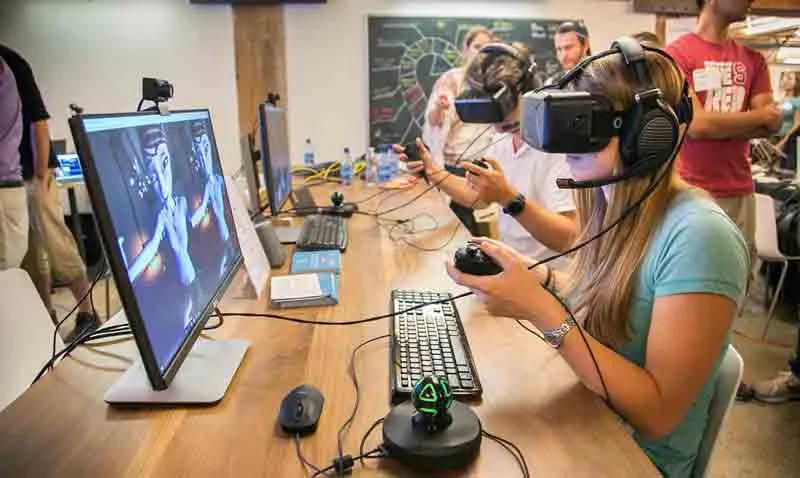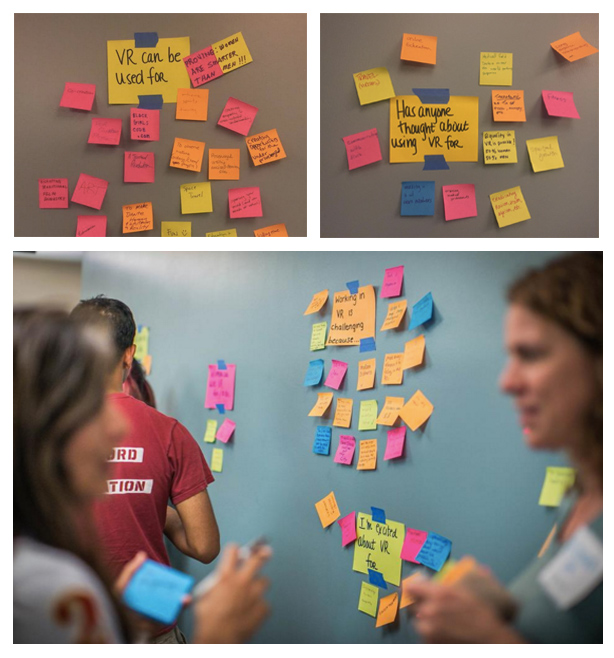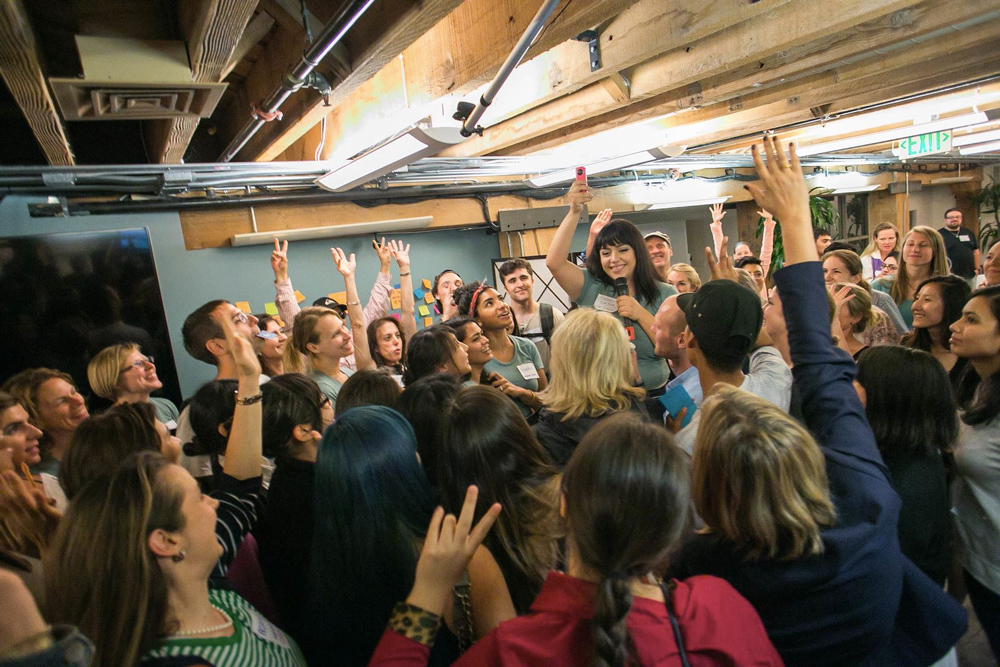Oculus Connect was awesome in every way for me — but one. It was teeming with expectations and energy. It was bubbling with the promise of a revolutionizing technology just hitting its stride. The speeches were inspiring, the demos dazzling and the dining delicious. So why did I, no newcomer to VR, feel strange?
 Sophia Dominguez is the founder of AllThingsVR (allthingsvr.co), a weekly curated newsletter of the top VR news, innovators and content. She is also the Entrepreneur in Residence at Rothenberg Ventures for their second River Class.
Sophia Dominguez is the founder of AllThingsVR (allthingsvr.co), a weekly curated newsletter of the top VR news, innovators and content. She is also the Entrepreneur in Residence at Rothenberg Ventures for their second River Class.
Let me rewind. I attended a VR event full of people trying demos but the vibe was different—and not just because it was in San Francisco. Imagine entering a noisy room full of dozens of VR enthusiasts moving from demo to demo but your eyes are drawn to one huge wall splattered with colorful sticky notes in many different handwriting styles. Imagine that shortly after you enter, you are invited by the event’s organizers to add your voice to the others: VR could be used for…? Has anyone thought about using VR for? Write it on a sticky note and post it with the others, anonymously for everyone to see and contemplate. The event’s co-organizers, Aashna Mago and Anargyha Vardhana, would systematically acknowledge and open up a discussion around everyone’s ideas later in the event. Something about this collaborative activity struck me as distinctively useful in a way that I could not fully appreciate until after Connect. What was the event, you wonder? Keep reading…
I was fortunate enough to be able to attend Oculus Connect on a scholarship, thanks to the Virtual Reality Girls, an organization started by Julie Young and Paisely Smith. As part of the scholarship, I was asked to attend the Oculus Diversity Leadership Luncheon, which was designed to “inspire conversations about how the VR community as a whole can grow into a welcoming space for all people.” People at the luncheon were incredibly eager to “change the ratio” within the VR community. However, once the meal was over, I did not see another woman at Connect for at least 30 minutes. That fact was not lost on me. I really did notice and it felt strange despite not being a newbie to VR’s demographics and environment. Maybe others could, but I could not ignore the fact that so far VR is still very much a male environment. Don’t believe me – just do a search for VR meetups. How many are oriented toward women? I find 3 and all are in California.
Does it matter that so few VR enthusiasts at this moment are girls and women and, if so, how? Let me take you back to San Francisco. Would it surprise you to know now that the event was titled “Women In VR” although it was open to everyone? The organizers, including UploadVR who sponsored the event, gave it this name intentionally so that women would feel more inspired to attend. And they devised collaborative activities purposefully, inviting marginalized VR community members to participate fully, have voice and feel that their ideas are meaningful and worthy. I found this refreshing and it relates beyond VR.
Recent research is very consistent. You want companies to succeed? Have women on the corporate board, says Sheryl Sandberg of Facebook in the NYT Sunday Review. You want to have the smartest, most creative teams? Research shows that teams with a 50-50 gender split perform much better.
Though it may sound cliché, diversity really does add value, not just in terms of gender but gender is particularly critical because females, tend to be more emotionally intelligent.
Why is this important to VR?
It’s important because maximizing the potential of VR means knowing and understanding its heretofore untapped diverse markets. To date VR, like many technologies before it, is being spearheaded by men developing male-oriented content. However, is that a truly sound strategy for the longer term whether measured in dollars or sense? How can we know VR’s true potential if so few are at the VR table today? Women are everywhere in other creative enterprises—theater, film, storytelling and more. We need to be welcomed into VR too.
Today is the moment for VR to intentionally diversify because it is today that we must innovate VR’s content. Who can build better content creation tools and experiences? The more diverse the participants in the creative process and the more we collaborate over compete, the more successful we will be, however counterintuitive. What lacks is the will to push through the resistance to get to the point where when I attend Oculus Connect next I’m awash in diversity. How do we get there? It takes purposeful and sustained effort. Fortunately, there are examples we can follow, a couple of which I know intimately:
1. Oculus Connect is to be applauded because after receiving heat for so few women in attendance in 2014, this year they partnered with Virtual Reality Girls , whose mission is to “connect women working in virtual reality and future of storytelling.” The result was that 16 women, including myself, received a scholarships this year. That is a great start, but next year, we need more.
2. During Connect, there was a breakfast hosted by MadWomen VR, an organization started by Jacqueline Bosnjak of Q Department. Through a partnership with the Virtual Reality Company (VRC) and Mach1™, MadWomen VR empowers women in this creative field. Emily Cooper of VRC told me that through such meetings and organizations we can stop “knocking on the [VR] door and walk through it with a decisive blow.”
https://www.youtube.com/watch?v=zf88a9sZNuo
Now imagine that dozens of other VR companies and organizations make diversity in VR a top priority. It will not just happen; it has to be deliberately structured into VR. We know from too many prior experiences with technology fields—a particularly good example has been with gaming, that tech does not gravitate to diversity by itself.
VR is poised right now on the threshold of an amazing new world adventure. Who will write its script? What will it be about? And how will it impact our lives? That depends on who is participating and powerful. Where are you and where do you need to be?
































